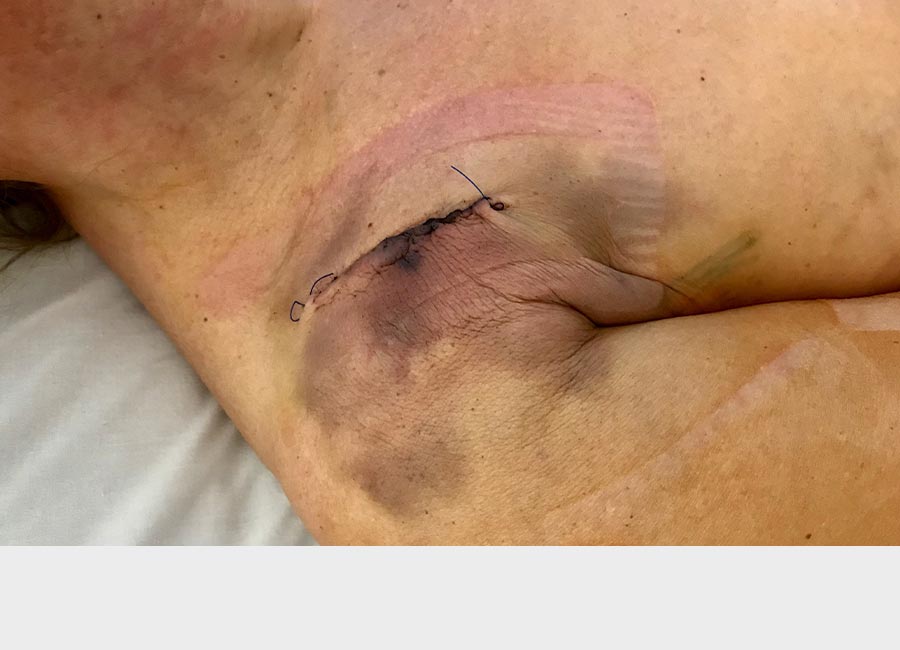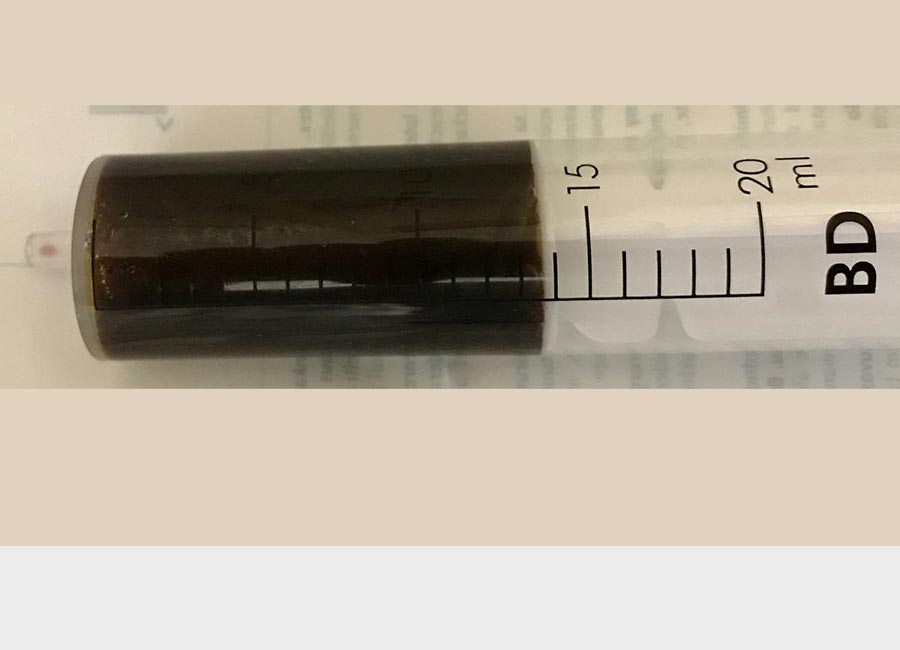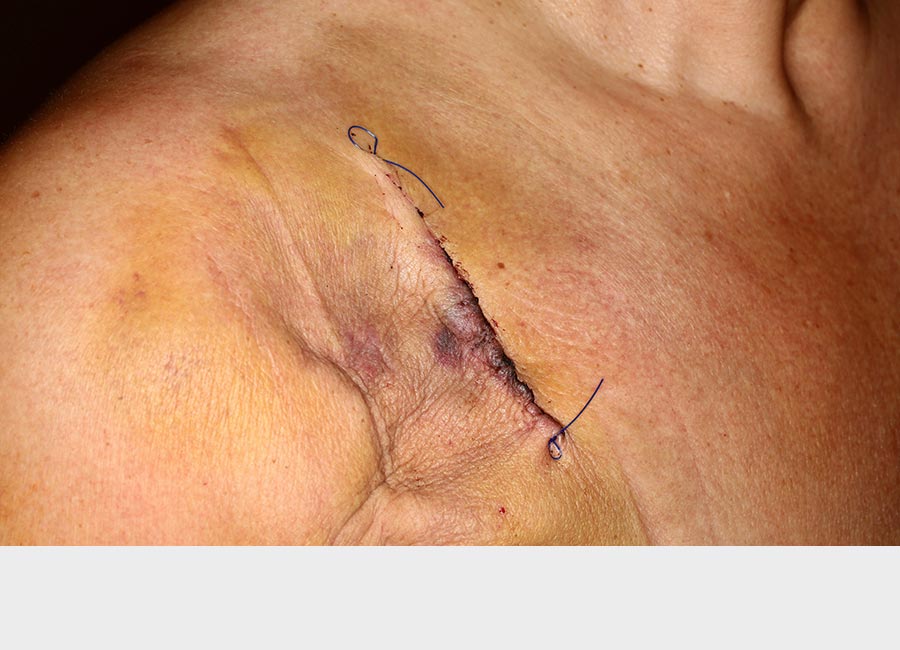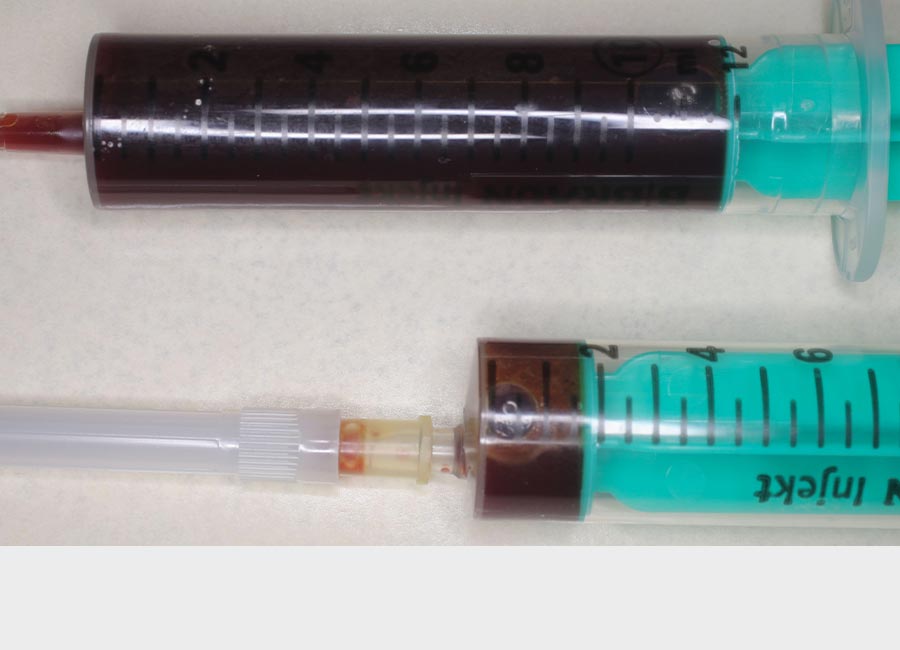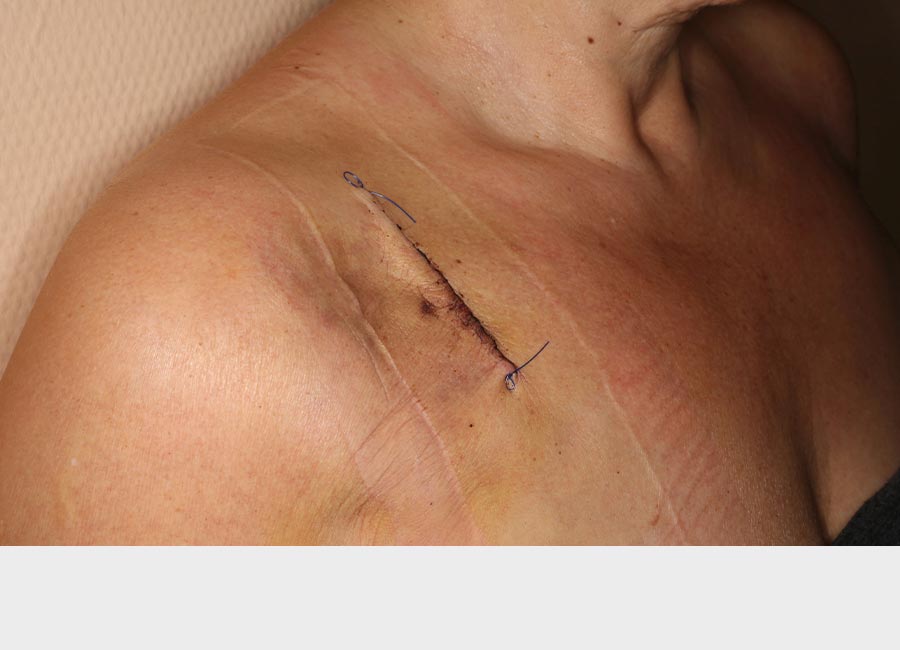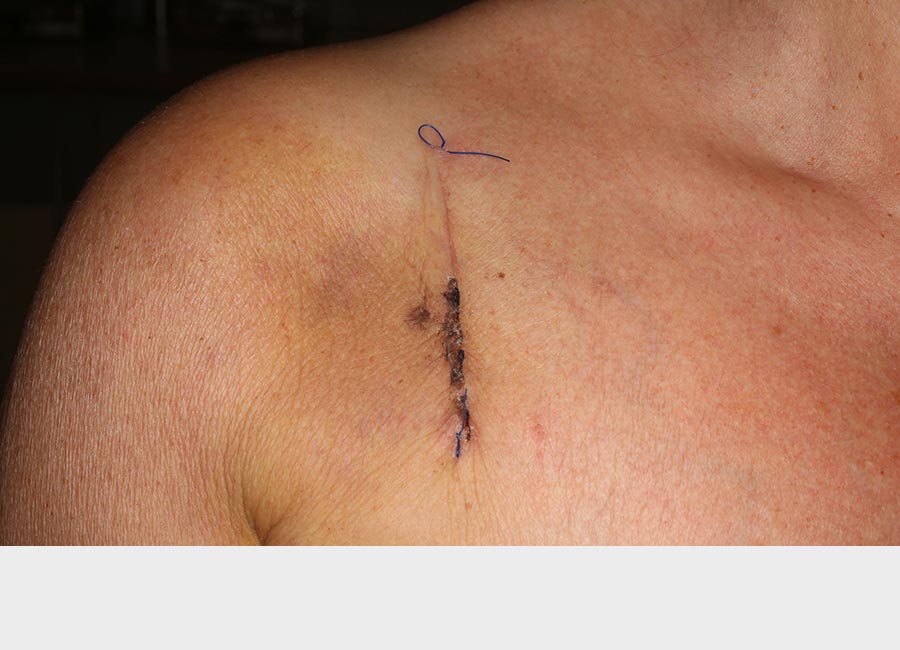
SHOULDER LIPOMAS
Lipomas and the skin in the shoulder area are under considerable tension because the shoulder is the most mobile joint in the human body and also one of the most complex. Therefore, it is easier to develop bulky scars if postoperative care and immobilization are not optimal. On the other hand, if the shoulder is immobilized for too long, it can quickly become stiff. This means that after surgery, the follow-up care should initially consist of consistent immobilization, followed by medically controlled, targeted movement and stretching treatment. Especially on the front side of the shoulder, highly complex and large, important blood vessels and nerves run, which can be displaced and damaged by a growing lipoma or injured by rough surgical procedures. Both the surgery and surgical caution are a must in this area.
Example of a 56-year-old female patient with a huge lipoma on the front right shoulder
Photos: Dr. Roman Fenkl, with the written consent of the patient
I am sharing the following photos to illustrate that achieving the best possible outcome in surgery isn't always straightforward. However, even in challenging cases, it's possible to attain excellent results with effort, careful postoperative medical care, and treatment. I hope these photos won't be alarming to anyone. Instead, I aim to show what can truly be achieved when one puts in the effort in difficult situations.
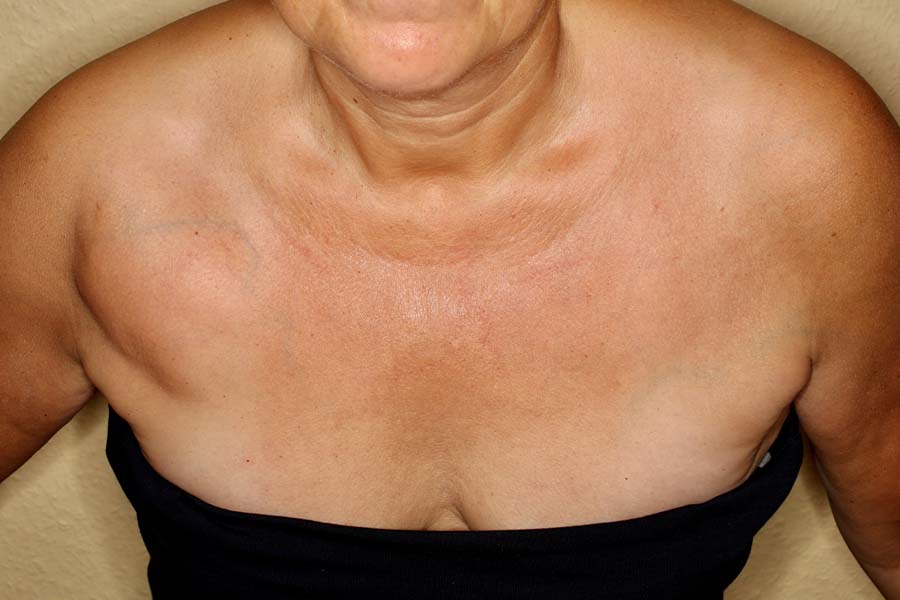
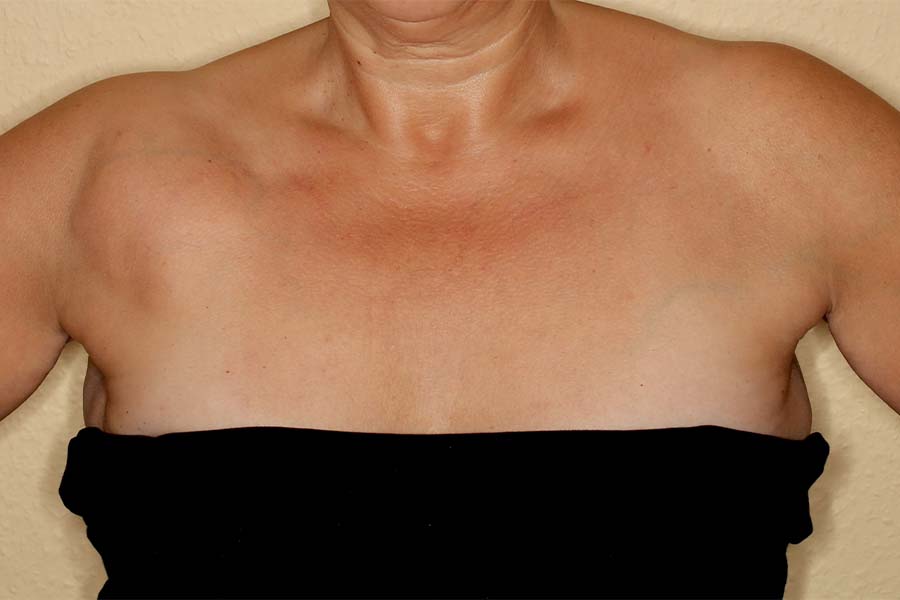
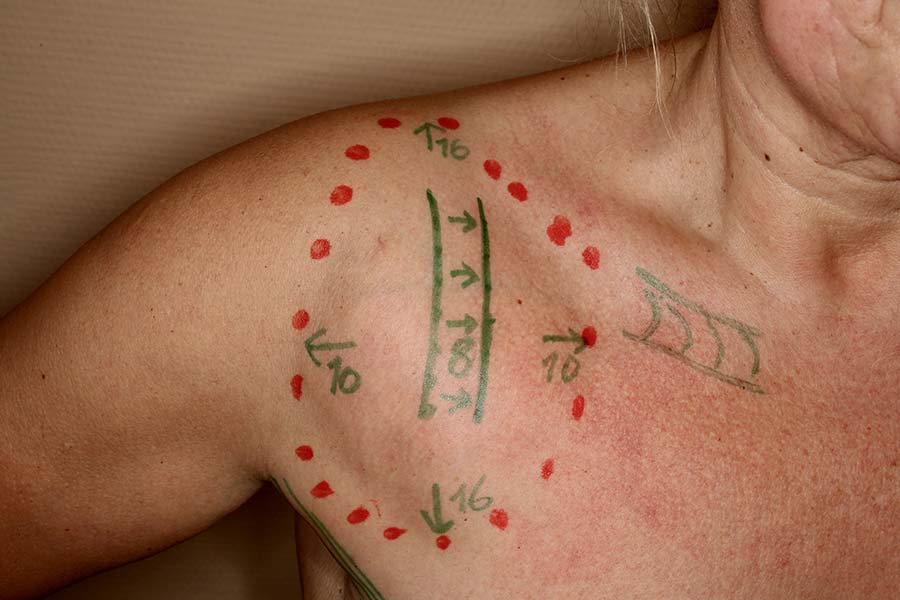
Photos 1 and 2:This 56-year-old patient had a massive lipoma on the front (ventral) of her right shoulder, reaching this size. Beneath it, the important plexus nerves and main arteries (subclavian artery and vein) for the right arm were located. This was not a straightforward situation and needed to be managed under general anesthesia.
Photo 3: My preoperative surgical planning. We marked the palpable tumor boundaries and measured 16 cm lengthwise (sagittal) and 10 cm widthwise (transversal). To conceal the future scar as best as possible, I also marked the outline of her bra strap on the skin and planned the scar accordingly, aiming to hide it effectively later on.
OP-PHOTOS
Would you like to see them?
Why do we show you surgical photos?
Many people believe that surgeries are robust, blood-rich, and chaotic.
Not with us!
We operate delicately, gently, with very little blood, and with the best possible overview,
displaying all anatomical structures optimally.
We want to showcase this.
This is our surgical quality.
And this is also the reason why we have an almost "zero" complication rate in surgeries.
We aim to provide the best possible transparency for visitors to our website.
Decide for yourself, whether you would like to see these surgical photos / films.
Go to the surgical photos!
Photo 1: 1st day postoperative. The skin has been through an extensive surgery, and the lipoma that grew extensively just beneath the dermis has caused some irritation and blood perfusion discrimination. Without consistent medical follow-up, a larger area of the skin could become necrotic. In this case, a postoperative hematoma complicated the situation, requiring drainage – a very rare exception for us.
Photo 2: The hematoma (bruising) punctured on the 1st postoperative day. The procedure was painless.
Photo 3: Just 3 days postoperative, the skin has started to recover, but another hematoma needed to be drained. Lipomas don't always make things easy, neither for the doctor nor the patient.
Photo 4: Sterile hematoma drainage on the 3rd postoperative day.
Photo 5: At 10 days postoperative, the skin has significantly improved, but there are still some minor issues with the wound edges. Continued medical treatment is necessary.
Photo 6: At 17 days postoperative, we're on the road to recovery, but due to scabbing, the wound still needs treatment to achieve an optimal aesthetic scar outcome.
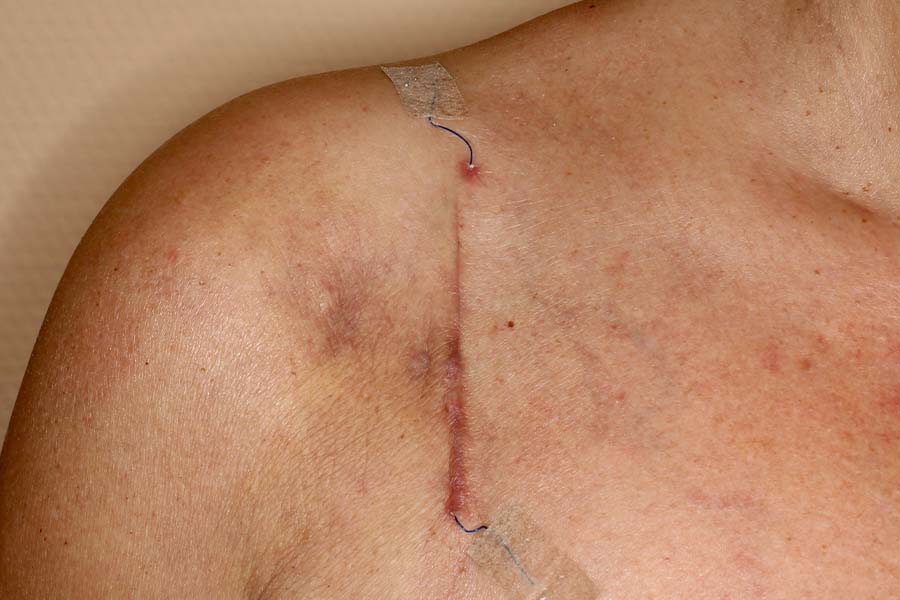
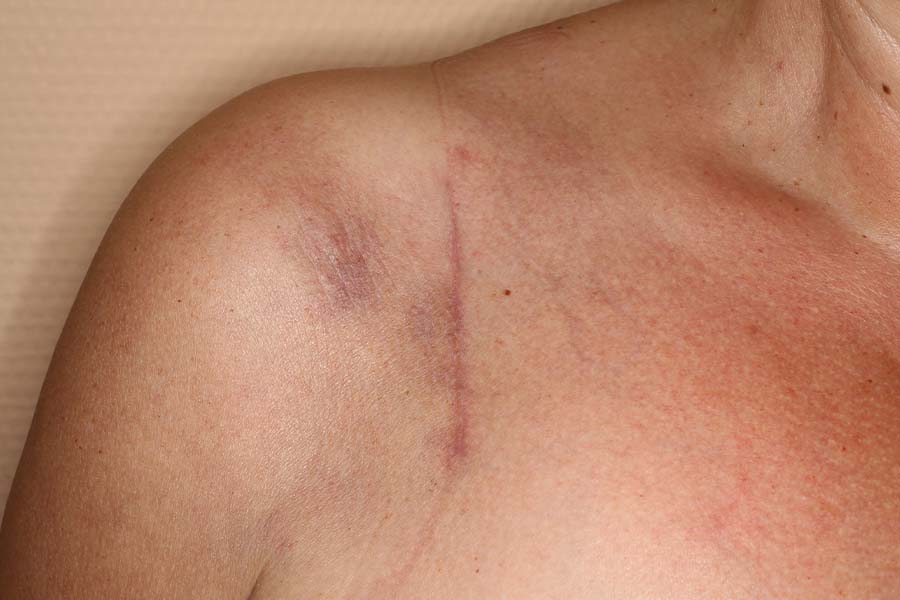
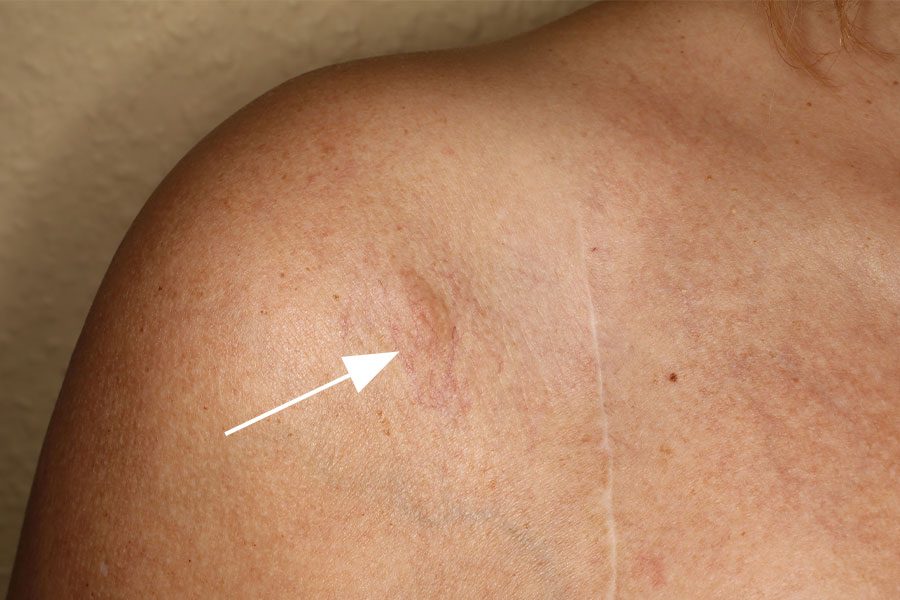
Photo 1: 5 weeks postoperative. The skin has fully recovered. The sutures were left in place to ensure optimal scar formation until now, then were removed without any issues.
Photo 2: 3 months postoperative. The scar is still slightly red, which is normal, but very fine.
Photo 3: 2 years postoperative, the scar has healed and faded. It is very fine and has healed optimally even from an aesthetic perspective. The contour of the shoulder shows no sign of the extensive surgery except for the scar. Only the lipoma that was previously embedded in the skin is palpable (though barely visible, indicated by the arrow). Now is the right time to delicately and completely excise the intracutaneous lipoma, and that's exactly what we did.
Overview of Surgical Therapies for Lipomas by Body Regions
Here you will find an overview by body regions of all the issues and treatment methods related to "Lipomas" described on this website.
Your Appointment in Our Practice
I would be pleased to meet you in my practice for a consultation in Darmstadt-Griesheim. Please book an appointment telephonically. Please mail us for further information under info(at)dr.fenkl.de.
For a personal consultation call the number below at any time between 08:00 – 18:00 from Monday to Thursday
Tel. 0049 6155 - 87 88 84

